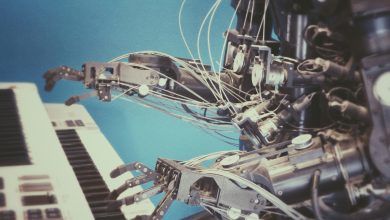
The front door has always been more than just an entry point; it’s a boundary between safety and exposure. For decades, we’ve used keys, cards, and codes to decide who gets to cross that line. But in an age defined by constant change and digital evolution, the next generation of access control technology is at the door. Something smarter is knocking.
AI is changing the way we approach security across all corners of the industry by using the data our systems generate each day in new, intuitive ways that enhance efficiency and safety. It allows us to ensure our security postures can adapt to variables based on identifiable patterns, context, and risk signals in our security systems’ data instead of relying solely on predetermined rules. Additionally, innovators are beginning to integrate generative AI platforms into security systems that users can talk to, using operational commands to customize and manage their solutions quickly and seamlessly. While video surveillance led the charge in adopting AI, the next wave of innovation is now unfolding in the access control sector.
AI is transforming physical access control from something modern into something far more future-ready. Gone are the days when valuable insights that could help teams operate at their best were locked behind walls of data. In their place comes a more fluid and responsive solution that responds to user input based on relevant, industry-specific terminology to turn untapped data into actionable insights. The shift toward intelligent systems reflects a broader need in security: systems that make use of their collected access data for smarter security.
Evolving Beyond Traditional Credentials
Physical tokens like ID badges or key fobs are only as secure as the people who carry them. Keys and cards can be lost or stolen, which means security teams must manually deactivate and replace credentials. Additionally, forgotten PINs, shared access codes, and cloned cards can create entry points for unauthorized individuals. These vulnerabilities have made it clear that smarter authentication methods are needed.
AI-powered biometric authentication is changing the way security teams verify access permissions. Facial recognition and fingerprint scanning tie access to something you are rather than something you carry, scanning the person rather than an object that can be replicated. These methods are harder to spoof because while cards and badges can be cloned to bypass people, our faces and fingerprints are entirely unique to us. Biometrics offer both security and convenience, removing the friction of manual identity checks, and when powered by AI, the biometric check-in process becomes automatic and seamless.
A Smarter Approach to Data
But the applications of AI don’t stop at biometrics. Behavioral analytics brings another layer of intelligence to integrated access control systems, letting security teams monitor access patterns to detect subtle changes in user behavior. For instance, if an employee who typically enters at 9 a.m. suddenly tries to gain access at midnight from a different location, the system can flag that anomaly. Intelligent access is not just about automatically letting people in at normal access times— it’s about knowing when something doesn’t feel right and helping teams figure out what’s going on.
Touchless systems and voice-activated controls powered by AI are also on the rise. In a post-pandemic access control landscape, these tools make it easier and safer to move through buildings without pressing buttons or swiping cards. AI is the brain behind these experiences, constantly learning from interactions to refine and improve access protocols. For example, touchless systems with integrated AI tools enable users to use unique terms and operational commands to prompt automated responses to navigate access control systems, all without needing to touch any screens.
Leveraging AI to Unlock Intelligent Insights
It’s important for AI models to be purpose-built because effective security demands precision, reliability, and context-aware decision-making, which only focused AI solutions can provide to security teams. Generic AI tools are integrated into systems to perform a wide variety of tasks, just as humans can learn and do many different things. In contrast, purpose-built AI platforms are made for one specific purpose. As AI-powered solutions are being developed for other systems, such as surveillance and alarm systems, security teams will soon find purpose-built AI solutions created with access control in mind, elevating access control beyond conventional limits.
Generative AI is changing the way security teams interact with access control systems by turning traditional software into something more responsive and intuitive. Instead of manually sifting through system reports to compile access logs and look for anomalies, users can now ask clear, natural-language questions and get immediate answers. This makes it easier to detect access patterns in real time, like spotting where entry denials are stacking up or identifying which doors see the most traffic to determine where resources and attention are best spent. With this kind of speed and clarity, managing access control systems feels less like everyday work and more like a conversation with an expert.
But automation isn’t just about saving time; it’s about noticing what people miss. Generative AI allows security teams to scan thousands of data points and detect small changes that might signal a looming issue, like a malfunctioning reader or suspicious entry attempts. Equipping teams with this information ensures users can take action on their own, adjusting settings, generating alerts, or recommending follow-ups before a problem grows. It’s a quiet shift in how access control works — less reaction, more readiness.
A New Kind of Security Mindset
The future of access control isn’t focused on plastic cards and laminated badges. It’s made of sensors, algorithms, and systems that learn with every swipe, scan, and spoken word. AI isn’t limited to Google Maps or chatbots on our phones anymore — it’s a quiet partner watching over the entire system, picking up on patterns that the naked eye might miss. Integrating AI into access control systems takes security operations beyond just protecting people and assets from risks as they appear, making them aware of every possible variable using their secret weapon: data.
For security professionals, AI integration is an opportunity to take their skills beyond conventional limits. AI handles the heavy lifting, while humans focus on strategy, planning, and making the important decisions. This partnership between man and machine creates a security posture that’s more agile, more alert, and far better prepared for the risks we haven’t yet anticipated. It’s not about replacing the role of humans in security, but giving them better tools to create safer, more welcoming environments.
The future isn’t a locked door waiting for a key — it’s one that knows when you’re coming. It opens at the right moment, for the right reason, with a welcome that’s both intelligent and secure. The door is about to open. Are you ready to cross the threshold?




